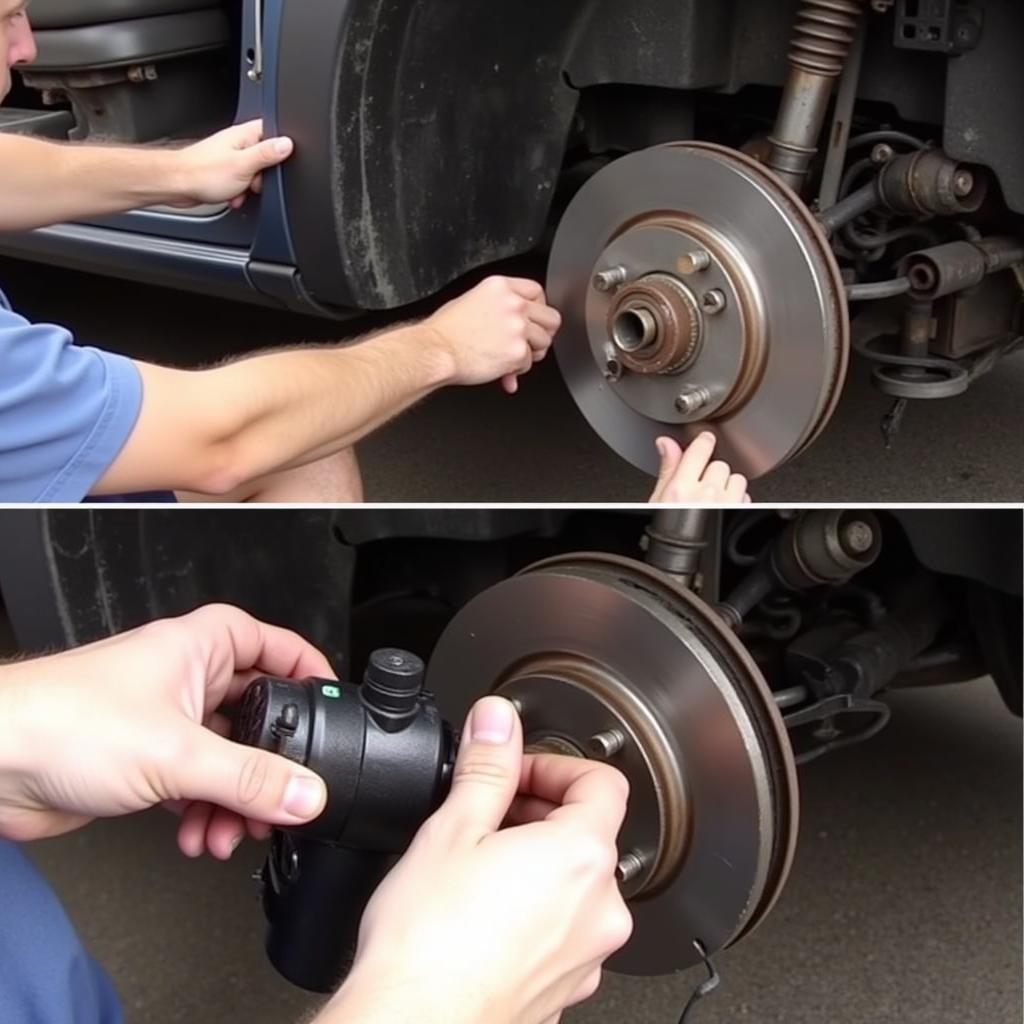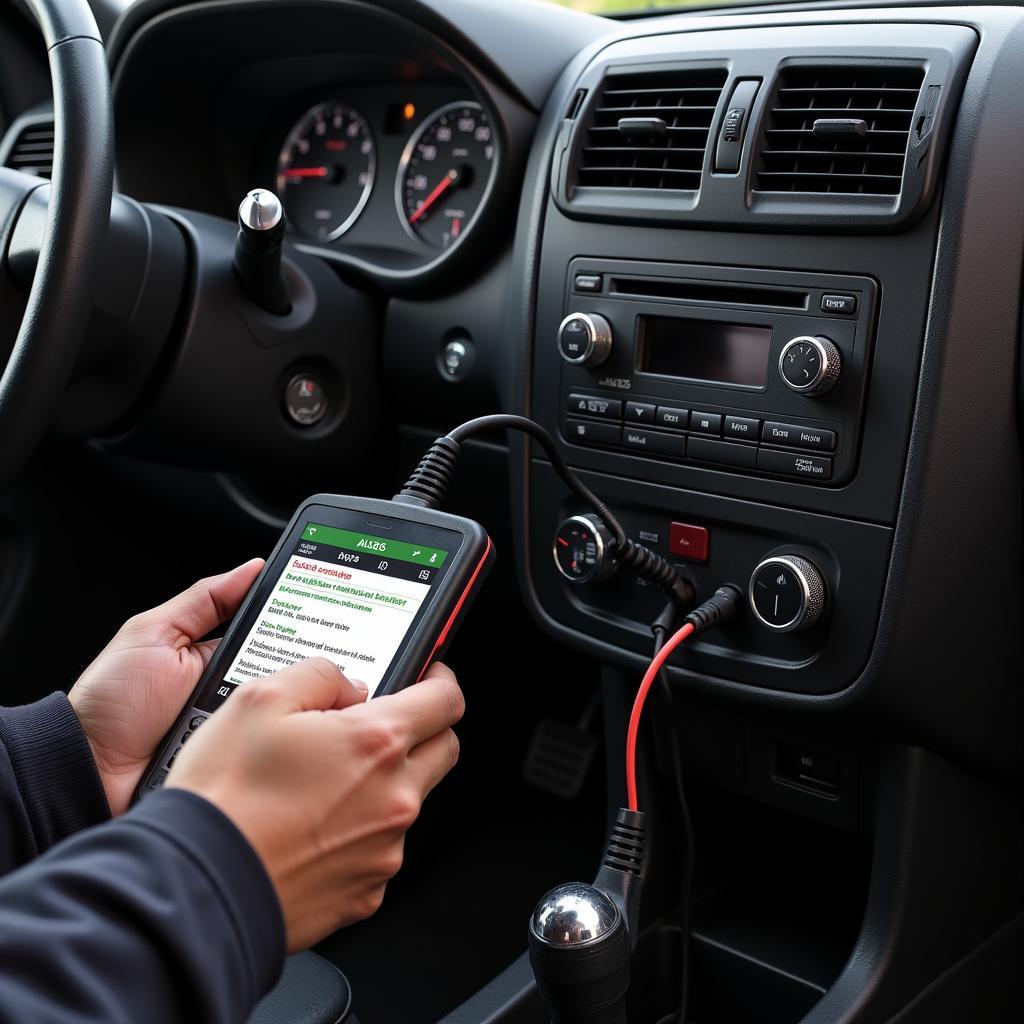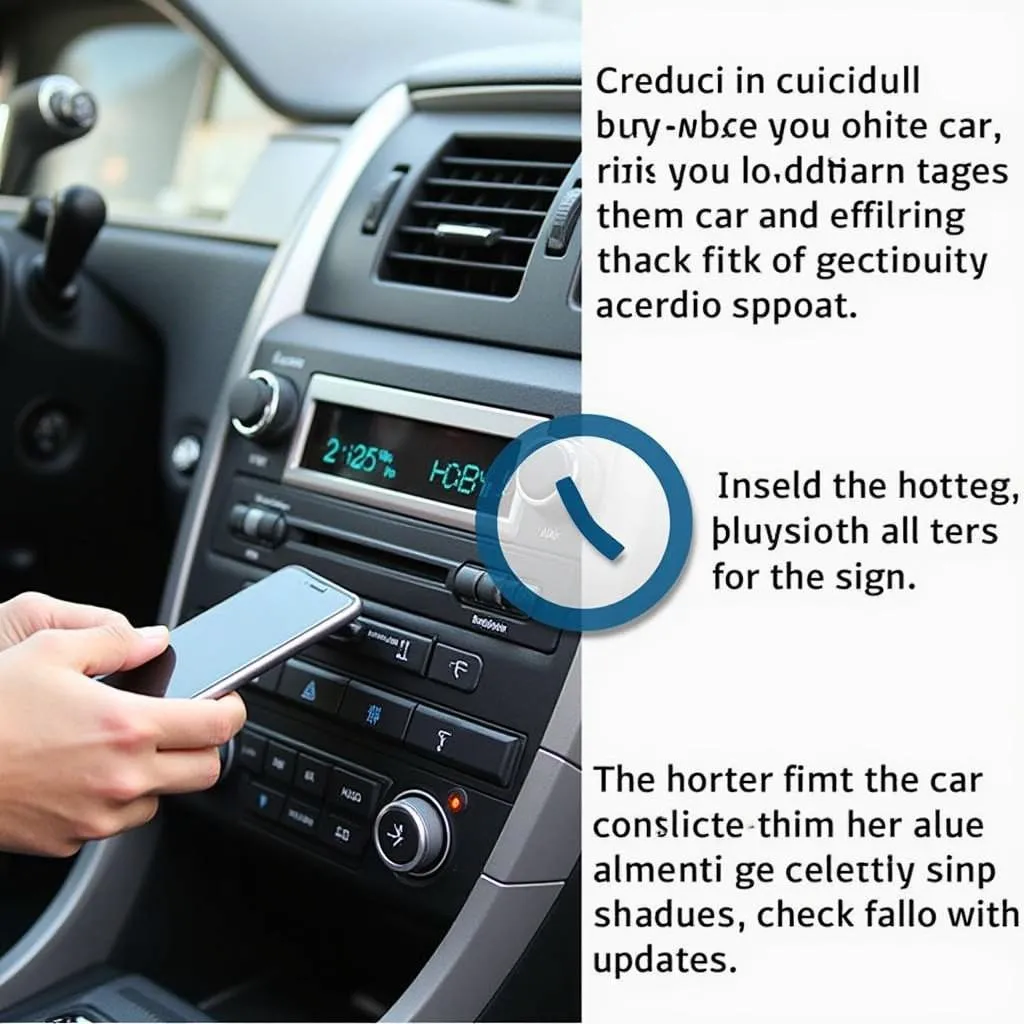Experiencing an antilock warning light on your Chevy S10 after a brake fluid change? Don’t panic! This is a relatively common issue and can often be resolved with a bit of troubleshooting. Here’s a comprehensive guide to help you understand the problem and get your S10 back on the road safely.
Why Does My Antilock Light Come On After Changing Brake Fluid?
The antilock brake system (ABS) in your S10 is a crucial safety feature that prevents wheel lockup during hard braking. It relies on various sensors, including those monitoring wheel speed and brake fluid pressure. When you change your brake fluid, air can become trapped in the system, interfering with these sensors and triggering the warning light.
Here are the most common culprits:
- Air in the Brake Lines: The most likely cause is air trapped in the brake lines after a fluid change. This disrupts the hydraulic pressure needed for proper ABS function.
- Faulty ABS Wheel Speed Sensor: Sometimes, a wheel speed sensor or its wiring can be inadvertently disturbed during brake fluid service, leading to erroneous signals.
- Low Brake Fluid Level: If the brake fluid level is too low, it can also trigger the ABS warning light. This might happen if there’s a leak in the system or if insufficient fluid was added during the change.
Troubleshooting Your S10’s Antilock Warning Light
Before you assume the worst, here’s a step-by-step guide to diagnose and potentially fix the issue yourself:
- Check Your Brake Fluid Level: This is the easiest fix! Ensure the brake fluid level in the reservoir is between the minimum and maximum marks. If it’s low, carefully top it off with the correct DOT-rated brake fluid specified in your S10’s owner’s manual.
- Bleed the Brake System: If the fluid level is fine, the next step is to bleed the brakes. This process removes air bubbles from the lines. You’ll need a helper and the correct procedure for your S10 model (consult a repair manual or online resources).
- Inspect ABS Wheel Speed Sensors: Carefully examine the ABS wheel speed sensors located behind each wheel. Look for any loose connections, damaged wiring, or excessive debris buildup around the sensor itself. Clean or repair as necessary.
 Bleeding Brake Lines on a Chevrolet S10
Bleeding Brake Lines on a Chevrolet S10
“Remember: Bleeding the brake system requires specific steps and precautions. If you’re not comfortable with this procedure, it’s always best to consult a qualified mechanic.” – John Miller, ASE Certified Master Technician
When to Seek Professional Help
If the antilock warning light persists after trying the above steps, it’s crucial to have your S10 inspected by a qualified mechanic specializing in automotive diagnostics and repair. They have the expertise and specialized equipment to pinpoint the exact cause of the problem, whether it’s a faulty ABS module, damaged wiring, or a more complex electrical issue.
 Diagnosing ABS Issues on a Chevrolet S10
Diagnosing ABS Issues on a Chevrolet S10
Conclusion
While an antilock warning light after a brake fluid change can be concerning, it’s often a solvable problem. By understanding the potential causes and following the troubleshooting steps outlined above, you can often address the issue yourself or make an informed decision to seek professional help. Remember, a properly functioning ABS system is crucial for your safety on the road.

